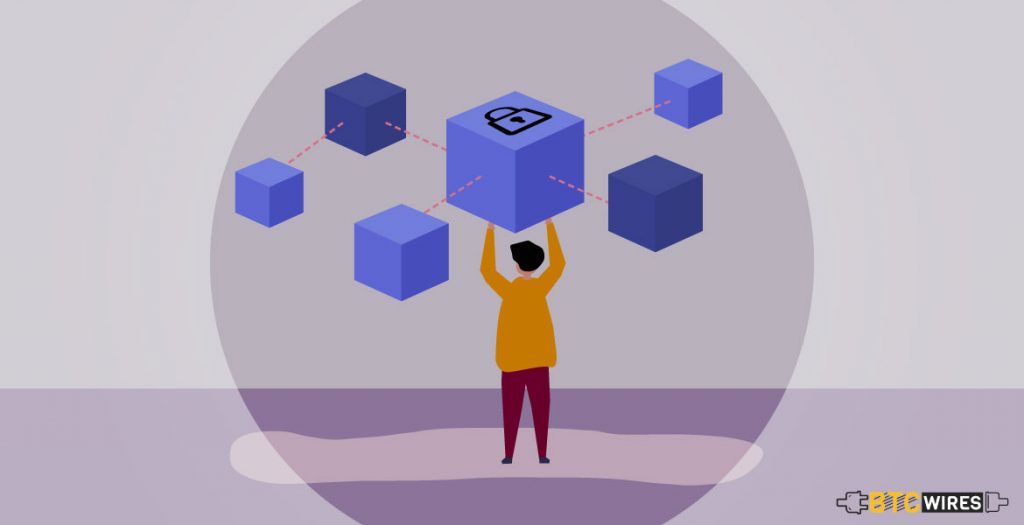Aug 2, 2018 16:12 UTC
| Updated:
Dec 13, 2018 at 12:56 UTC
How Does Blockchain Technology Work ?
At first, Blockchain Technology started as advancement behind the cryptocurrency, Bitcoin. Blockchain Technology appears in a collection of business applications today. A blockchain, in a general sense, is just a chain of blocks, where the blocks store units of data. In Bitcoin’s blockchain, this data is of the transactions.
There are three primary ways that collaborate to make a blockchain –
- Private key cryptography,
- Distributed network with a common record, and
- An incentive to benefit the system’s exchanges, record-keeping and security.
You may also read: How to Buy Bitcoin With Cash?
Elaboration Of The Advancements
The following is an explanation of how these advancements cooperate to secure computerized connections.
Private Key Cryptography

Whenever two people want to transact over internet, both of them possess a private key and public key. The fundamental reason for this segment of blockchain technology is to make a safe digital identity reference. Identity depends on ownership of a mix of private and public cryptographic keys.
The combination of these keys can be seen as a dexterous form of consent, creating an extremely useful digital signature. Thus, this signature gives stable control of ownership.
Identity: In any case, strong ownership isn’t sufficient to secure digital connections. While validation is explained, it must be joined with methods for approving transactions and authorizations.
For blockchains, this starts with a distributed network.
You may also read: 10 Differences Between Ethereum And Ethereum Classic
Distributed Network With Shared Common Record

The advantage and requirement for a distributed system can be explained by the ‘if a tree falls in the forest’ thought test.
In the event that a tree falls in a forest, with cameras to record its fall, we can be truly sure that the tree fell. We have visual proof, regardless of whether the particulars (why or how) might be unclear.
A great part of the estimation of the bitcoin blockchain is that it is a vast system where validators, similar to the cameras in the relationship, achieve an accord that they saw a similar thing but instead of cameras, they utilize mathematical calculations.
So, the size of the system is essential to secure the system.
That is one of the blockchain’s most attractive characteristics — it is so expensive and has amassed so much registering power. At time of composing, bitcoin is secured by 3,500,000 TH/s, more than the 10,000 biggest banks on the planet joined. Ethereum, which is still more immature, is anchored by around 12.5 TH/s, more than Google, and it is still essentially in test mode.
You may also read: 10 Reasons To Buy Bitcoins In 2018
System Of Records
At the point when cryptographic keys are joined with this system, a super helpful type of digital communication develops. The procedure starts with taking their private key, making a declaration— on account of bitcoin, that you are sending cryptographic money — and joining it to B’s public key.
Protocol
A block – containing a digital signature, timestamp and important data – is then communicated to all nodes in the system.
Network servicing protocol
A realist may challenge the “tree falling in the woods” theory in various ways. For example, why might there be a million PCs with cameras holding up to record whether a tree fell? At the end of the day, how would you draw in figuring capacity to benefit the system to make it secure?
With blockchains, by offering your computer processing capacity to benefit the system, there is a reward for one of the computers. A man’s self-interest is being utilized to help the general public need.
With bitcoin, the objective of the protocol is to wipe out that the same bitcoin cannot be utilized as a part of independent transactions in the same time, in such a way this would be hard to detect.

Bitcoins and their base units (satoshis) which have values must be interesting to be possess. To accomplish this, the nodes serving the system make and keep up track of past transactions for each bitcoin by attempting to tackle proof of-work mathematical problems.
They basically vote with their CPU control, communicating their agreement about new blocks or rejecting invalid blocks. At the point when majority of miners agree to similar arrangement, they add another block to the chain. This block is time stamped, and can contain information or messages.
The type, amount and confirmation can be different for each blockchain. It involves the blockchain protocol – or rules for what is and is not a valid transaction, or a valid creation of another block. Any needed rules and incentives can be created when enough nodes arrive at a consensus on how transactions confirmation ought to be verified.
We are at present in a time of blockchain improvement where numerous such examinations are being run. The main conclusions drawn so far are that we are yet to completely comprehend the skill of blockchain protocols.
Here are a Few Articles for you to Read Next:

























































